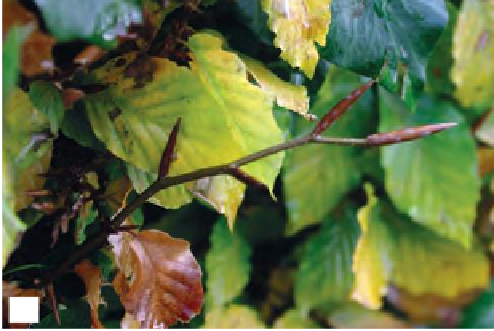Agriculture Reference
In-Depth Information
Bud scales
Foliage leaves
Terminal bud
Shoot apex
Axillary bud
Stem
(a)
(b)
Figure 7.9
Structure of a bud: (a) Brussels sprout; (b) magnifi ed image
(a)
(b)
7
(c)
(d)
Figure 7.10
Bud characteristics: (a) ash; (b) beech; (c)
Magnolia
; (d)
Camellia
, a large fl ower bud next to a narrow
vegetative bud
Adaptations
more efficiently. Some adapted organs store food
in the form of starch over the winter, giving plants
a head start when growth resumes in the spring
(
perennation
).
The features of a typical plant are described above,
but there are also many variations on the basic
form of the stem, root and leaf. Some adaptations
enable plants to spread vegetatively (asexually) (see
p. 101) and gardeners can take advantage of this for
propagating them (see Chapter 11). Other adaptations
enable plants to live in extreme environments, protect
them from herbivores or enable them to reach the
light for photosynthesis or access air and nutrients
A
perennating organ
is an organ that stores
food, enabling the plant to survive unfavourable
conditions. Examples are bulbs, corms, tubers
and rhizomes.







